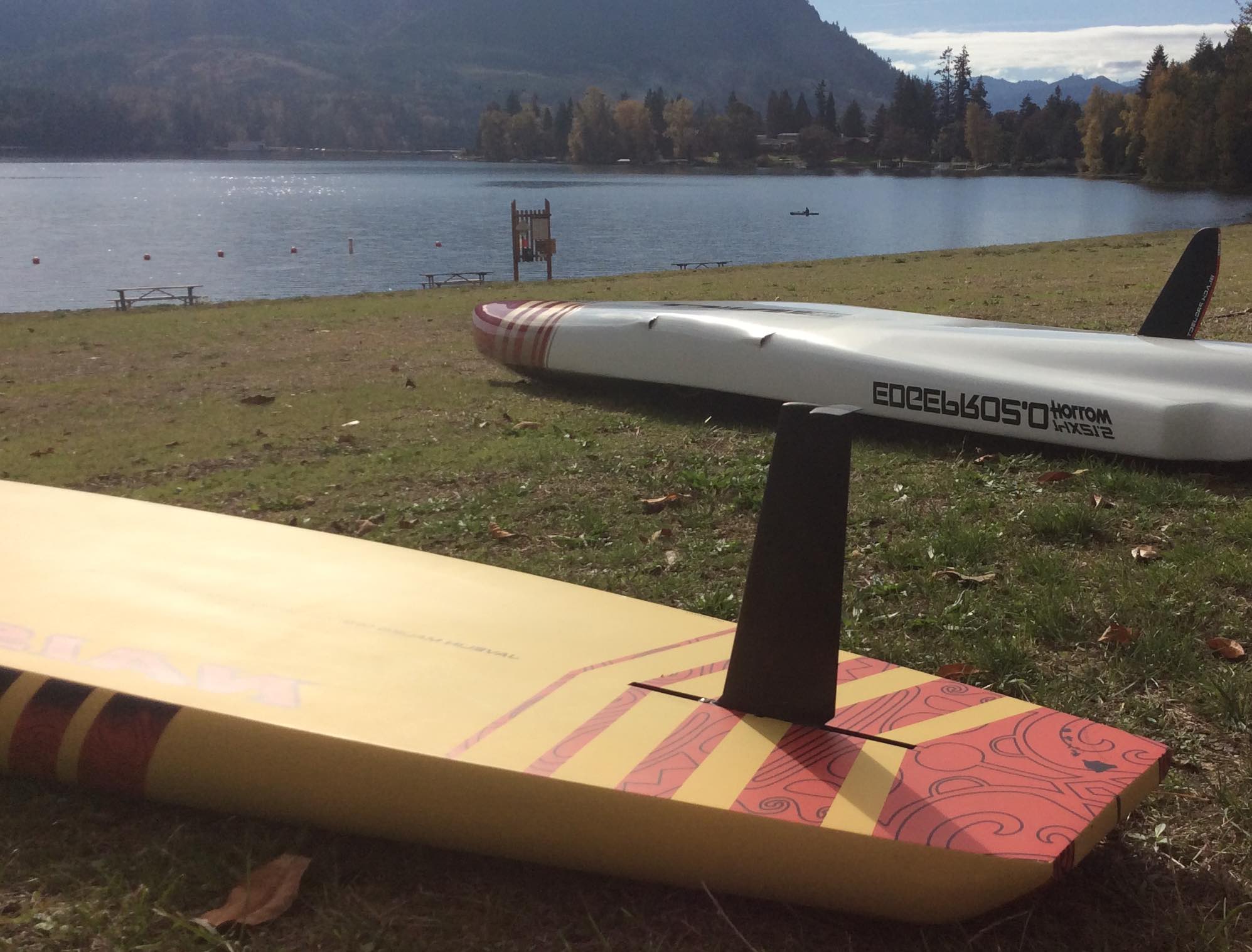
Aaron Lish examines the theory behind the winglets on the FinSciences WG2 SUP Fin and puts it to the test against one of the top performing fins in the world, the Black Project SUP Tiger Fin.
The FinSciences WG2 SUP Fin is a surfing and SUP fin which is designed upon the scientific findings of aerodynamics. Have you ever looked out the window of an aeroplane and wondered why they have tips on the wings? They are designed to decrease drag and increase efficiency, the same principles the WG2 SUP Fin was designed from. By reducing the surface area and increasing lift, these fins are meant to paddle faster and make you track straighter.
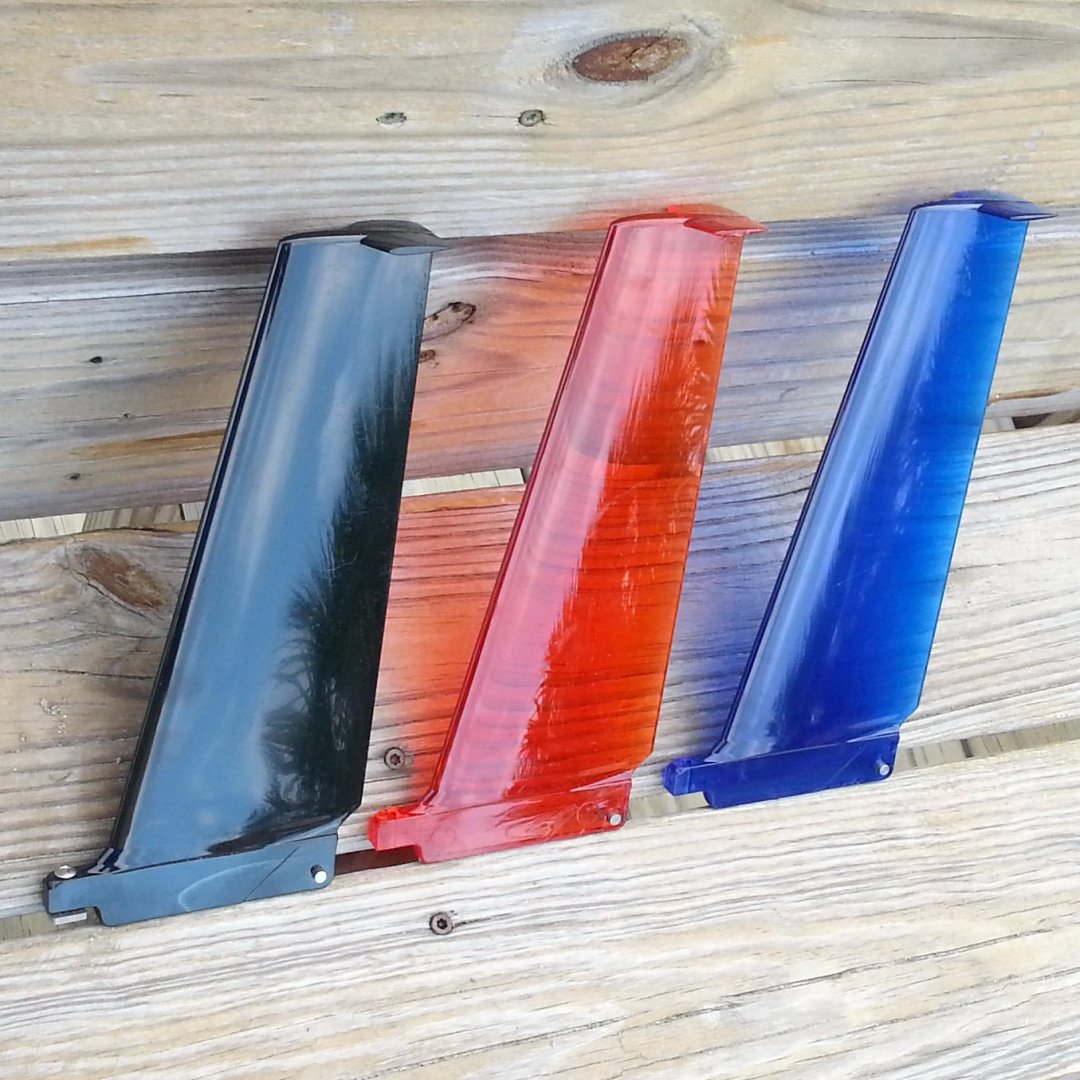
Aaron sent in his findings to us and wanted you to see his results. He breaks down in detail the process he used to test the fins and gives you a greater understanding of what type of paddler might suit the WG2 Fin. Ready to get technical about fins? We are!
We encourage you to read on as Aaron really gives us the technical details of the fin, but if you would rather see the results, then scroll down to find out.
About the test
Aaron based his in-water tests on the protocol that Dr Bryce Dyer has used in the past to test SUP fins and their efficiency. As a regular SUPboarder contributor, Dr Bryce Dyer has some great reads on this site, so click here to check them out.
Aaron’s findings, along with Dr Bryce Dyer’s previous fin testing articles, offer an insight into how fins actually do make a difference to your paddling. In essence, Aaron wanted to find out if the science behind the FinSciences WG2 SUP Fin was all it was promoted to be on their website and also how it compared to the efficiency of the Black Project Tiger Fin by using Stroke Index (find out more here).
- Finlets
- Stroke Index Calculation
To calculate your SI, you merely multiply your average speed in metres per second for a test run by its average distance per stroke in metres. If you’re wondering how to find out your average distance per stroke easily, just divide the length of your test run by the number of strokes you took to perform it. You’ll likely find that your distance per stroke is typically somewhere in the 3-4 metre range and the larger the SI score, the more effective and efficient your paddling is.
Background
I have a sailing background with an interest in performance / racing. As such, I was familiar with the idea of the end plate effect in keeping the wind from spilling out from the bottom of the sail (e.g. deck sweeping foresails, etc.). So when commercial airliners began adding the winglets at the tips it immediately made sense. Fast forward to late last fall when my wife and I were flying back from visiting my in-laws. I had started SUP paddling earlier in the year and quickly gotten hooked. Looking out at the wing of the plane I found myself wondering if adding winglets (an end-plate) to a SUP fin would be beneficial. A few months later I had the thought again, so I began looking online to see if such a fin would be legal in racing. My Google searching lead me to discover that Doug at FinSciences has researched the heck out of surf and SUP fin design, including the use of finlets. The science all made sense, and I was very intrigued. So although I was a little skeptical that a 9.25” fiber reinforced plastic (Lexan) fin could perform as well as my Black Project Tiger fin, I decided to go ahead and buy one. I figured if the science was as good as it sounded that I’d play around with adding finlets to an old solid-carbon carbon fin I had been thinking of cutting shorter. And having a very durable fin for longer, more remote paddles wouldn’t be a bad thing either.
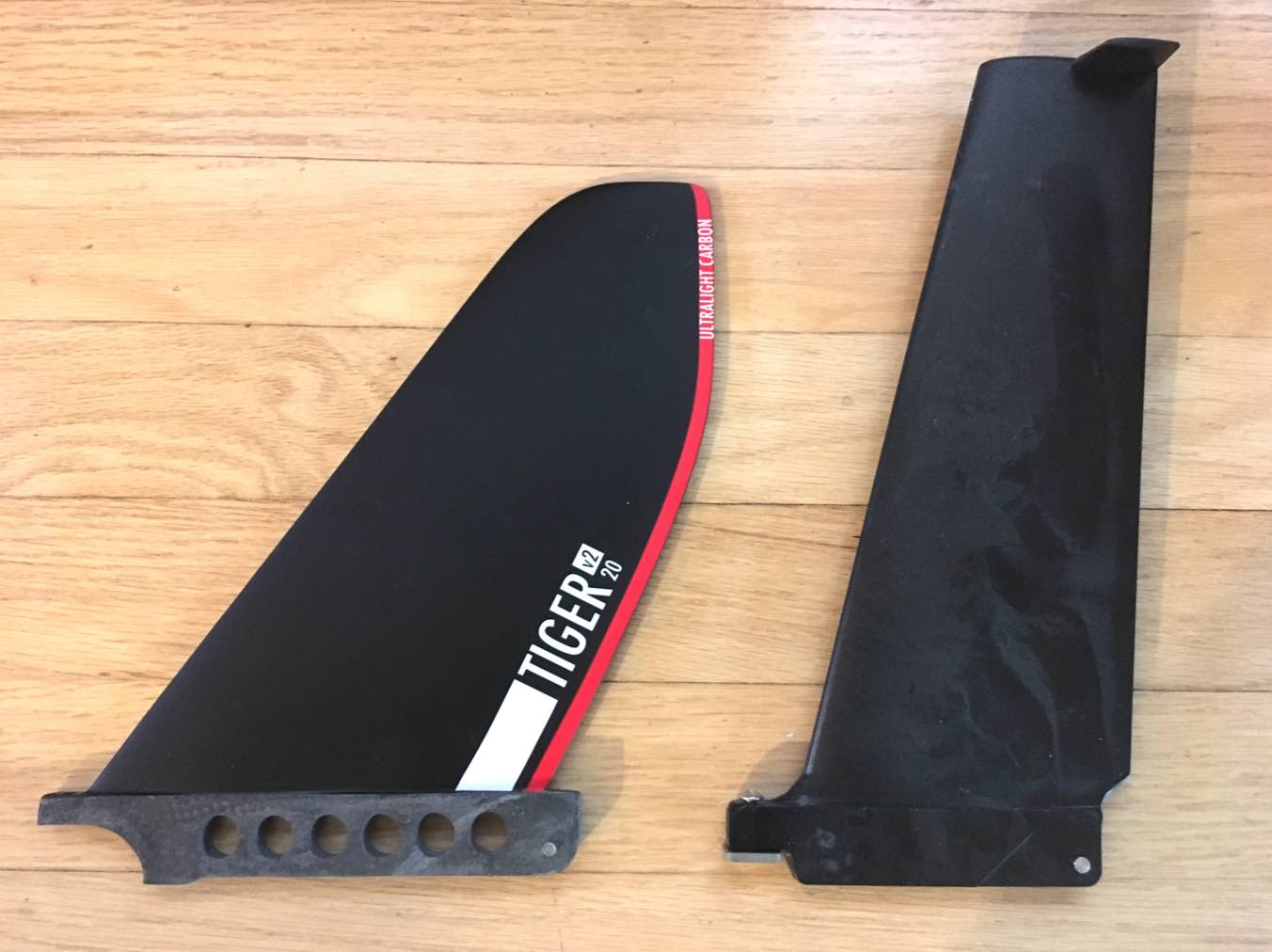
The Testing
I used Dr. Dyer’s fin testing protocol (Bryce Dyer Looks at SUP Race Fins). Test conditions were completely flat calm on a 290 meter straight line course with a running start of about 15 meters to get up close to test speed before hitting the first mark. Testing was done using a test speed of 5 miles/hour (8 kph) as this is a speed that is reasonably representative of a recreational racer. Strokes per side were adjusted as needed to maintain a straight course. Due to time constraints I was only able to complete 6 trials with the FinSciences fin and 5 trials with the Black Project Tiger. The trials for the FinSciences fin were split, making up the first three and last three test runs to decrease any bias from excitement about a new fin, as well as to minimize the affect of conditions changing over time, fatigue, etc. Speed was reported visually using a Garmin Fenix 2 mounted on the deck of the board. Time, speed, stroke rate, and heart rate (HR) data were recorded using the same device and a chest strap to monitor HR. Number of strokes was counted in my head as the Garmin cycling cadence sensor mounted on my paddle often misses a few strokes. The board used was a 2017 Naish Maliko 14’ X 24”. Foot and hand positions were taped to ensure consistency. Fin location was kept the same for both fins (marked position at the middle of the fin box).
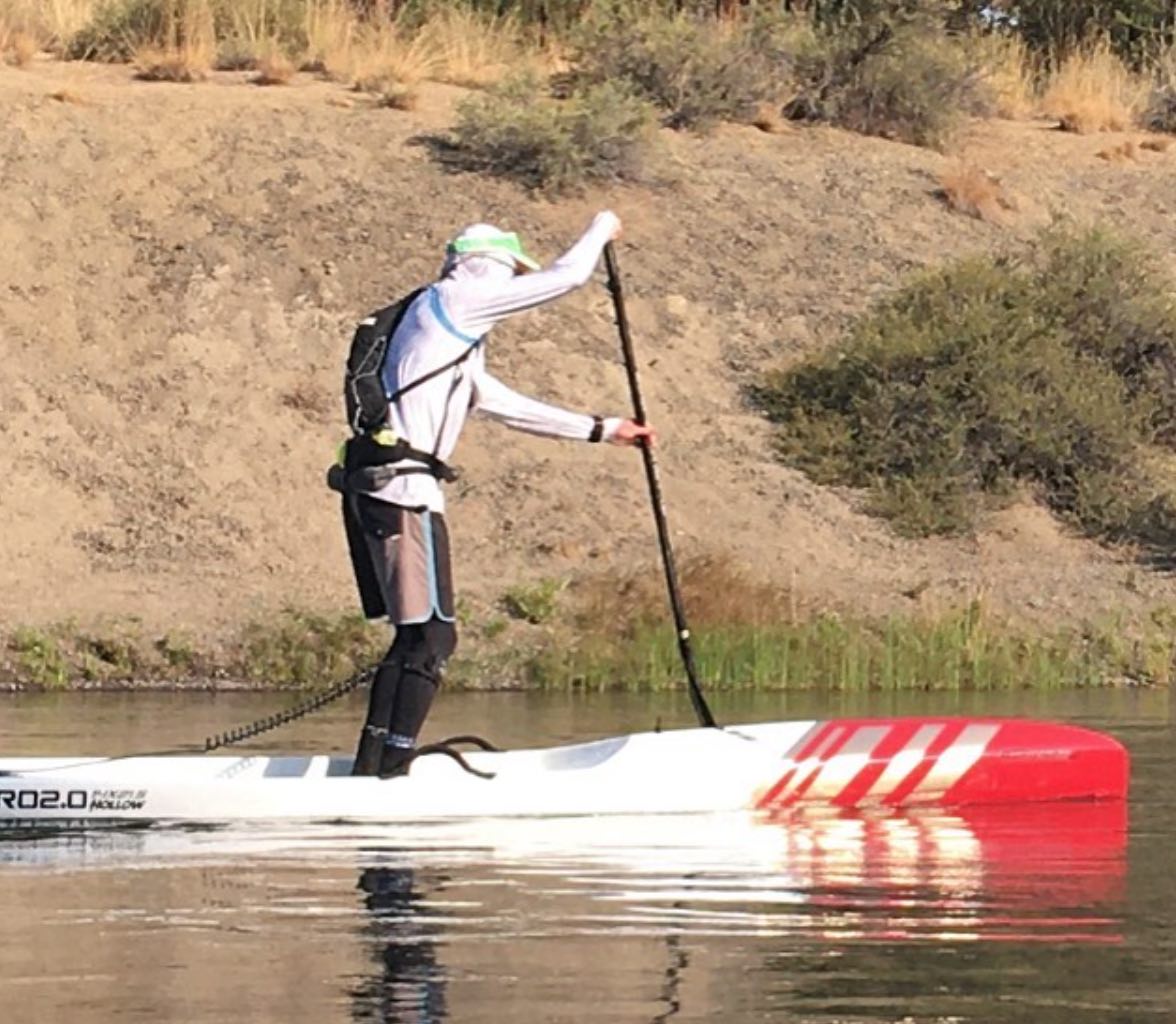
The Results
Average speed for each trial was calculated by dividing the distance by the recorded time. Distance per stroke was calculated by dividing the distance by the number of strokes for each trial. Stroke Index (SI) for each trial was then calculated by multiplying the average speed (meters/second) for that trial by the average distance per stroke (meters) for that trial. As I was curious to see if paddling effort (measured as heart rate since I don’t have a paddle power meter) could be factored into the results, I also calculated SI/HR, where HR was the average HR for that trial run.
The Black Project Tiger fin had an average SI that was 1.2% higher than for the FinSciences fin. And when SI was divided by HR and then averaged, the difference was reduced, with the Tiger fin now 0.9% better than the FinSciences fin. A higher SI means that fin was more efficient.
I averaged between 15-20 strokes per side with the Tiger fin compared to 25-30 strokes per side with the FinSciences fin. As I began to feel a little fatigue late in the testing, strokes per side dropped to 10-15 with the Tiger and 15-20 with the FinSciences fin. To paddle at 5.0 mile/hr, I was paddling at 55-58 strokes/min (as recorded on my Garmin watch).

Discussion
I was surprised that a plastic fin, which is less than half the price of a top end carbon race fin, could be within 1% as efficient. With the FinSciences fin not being as stiff as the Tiger, and with there being a little bit of vibration (buzzing) from the FinSciences fin, it makes me think that if this fin was stiffened up and refined a little bit, it could probably beat the Tiger, one of the winningest fins of the past few years.
Although I just questioned the materials choice by FinSciences, there is a lot to be said for having a durable fin, especially for touring or for long, adventure-type SUP races (Yukon River Quest, etc.). I don’t know of any other plastic fin that comes close to being as efficient as the top end carbon race fins.
The improved tracking was what was most notable about the FinSciences fin. During easy paddling it felt like I could paddle indefinitely on one side just by making subtle course adjustments with my paddle stroke and/or through minor rail steering. I can’t help but wonder if being able to take more strokes per side would be an advantage in a longer race, an ultra- event, or on a long tour where decreasing the frequency of paddle switches might be a real benefit. And since the fin tracks so well at lower speeds vs. many racing fins that are optimized for the faster speeds of competition, the FinSciences WG2 fin will likely be more efficient than the race-specific fins when used for longer distance / slower speed paddling (e.g. around 4-5 mph vs. the 5-6+mph speeds of racing).
I’ve also paddled the FinSciences fin in some gentle-to-moderate current (approx. 2 miles/hr current with some swirling condition) where other fins that track super well (like the SUP Gladiator Fury) have so much surface area that the water pushes the board around a lot. The low surface area of the FinSciences fin means that I could still make course adjustments without changing sides with my paddle. I’ve never been able to do that before when paddling in current with a fin that tracks very well – usually the current overpowers me.
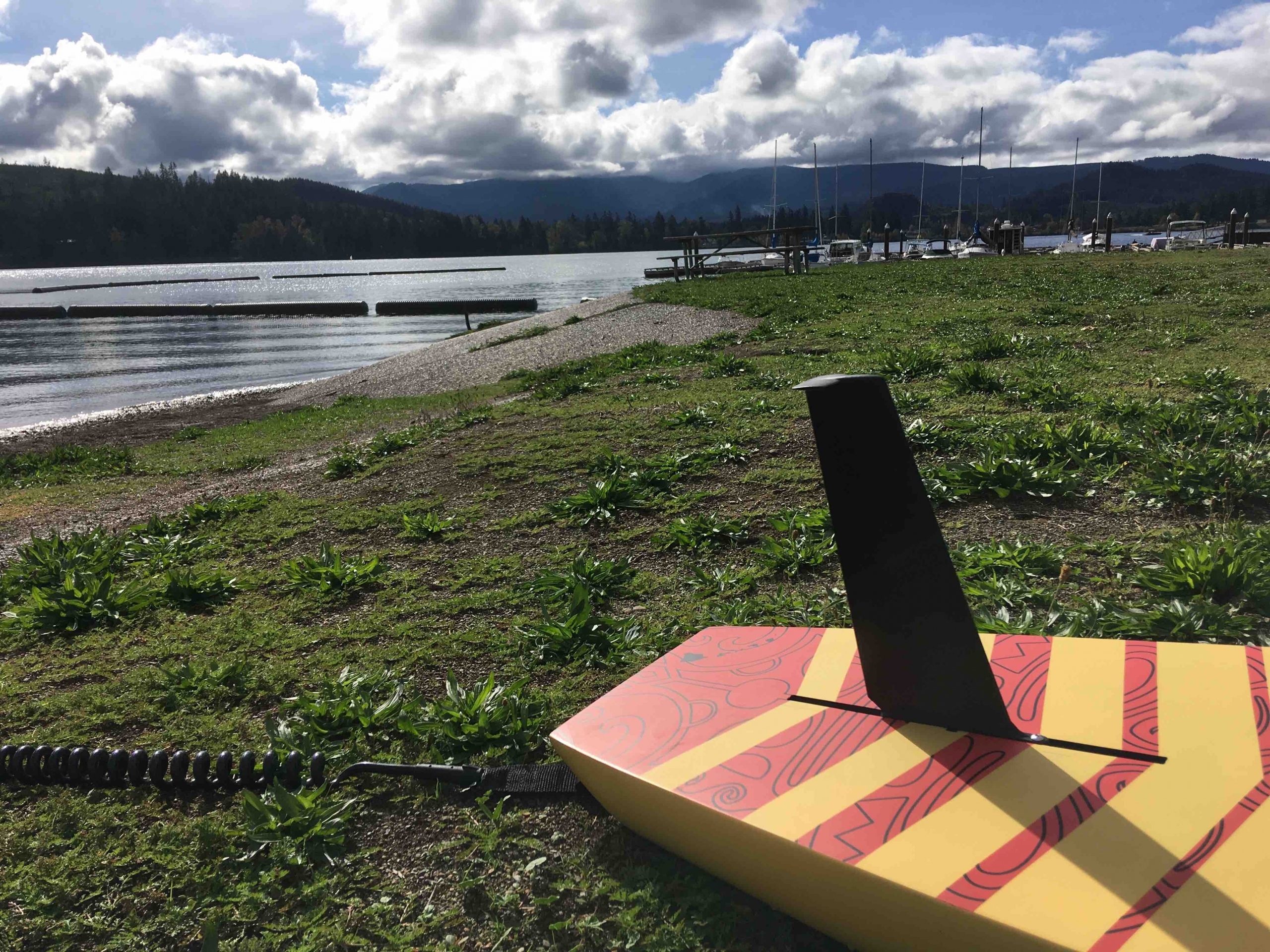
The use of a foil shape designed not to stall at a wide range of angles of attack is likely a big contributor here – meaning that even if the current is hitting the fin from 5-10 degrees off from parallel, the fin will still provide lift or hold in the water (tracking). Other fins stall in such conditions unless you’re paddling hard enough to be creating solid flow down the backside of the fin. In other words, at slower speeds the water hits too much on one side of the fin and just pushes you sideways while you fight to get back inline to the flow of the current.
The FinSciences fin has approximately 15% less surface area, but it goes 15% deeper into the water compared to the Tiger. The Tiger’s tracking comes from an efficient foil shape and the greater surface area. The finlets on the FinSciences fin make it even more efficient in keeping the water flowing directly aft across the fin, allowing for a design with less surface area but more lift. The finlets ,combined with the 15% more depth, are likely the reason for such excellent tracking.
The FinSciences fin dispels the myth that a longer base is the way to improve tracking. It would seem to me that better tracking is a result of an optimized foil. The more efficient the foil, the more lift it creates, and the straighter the course that is paddled.
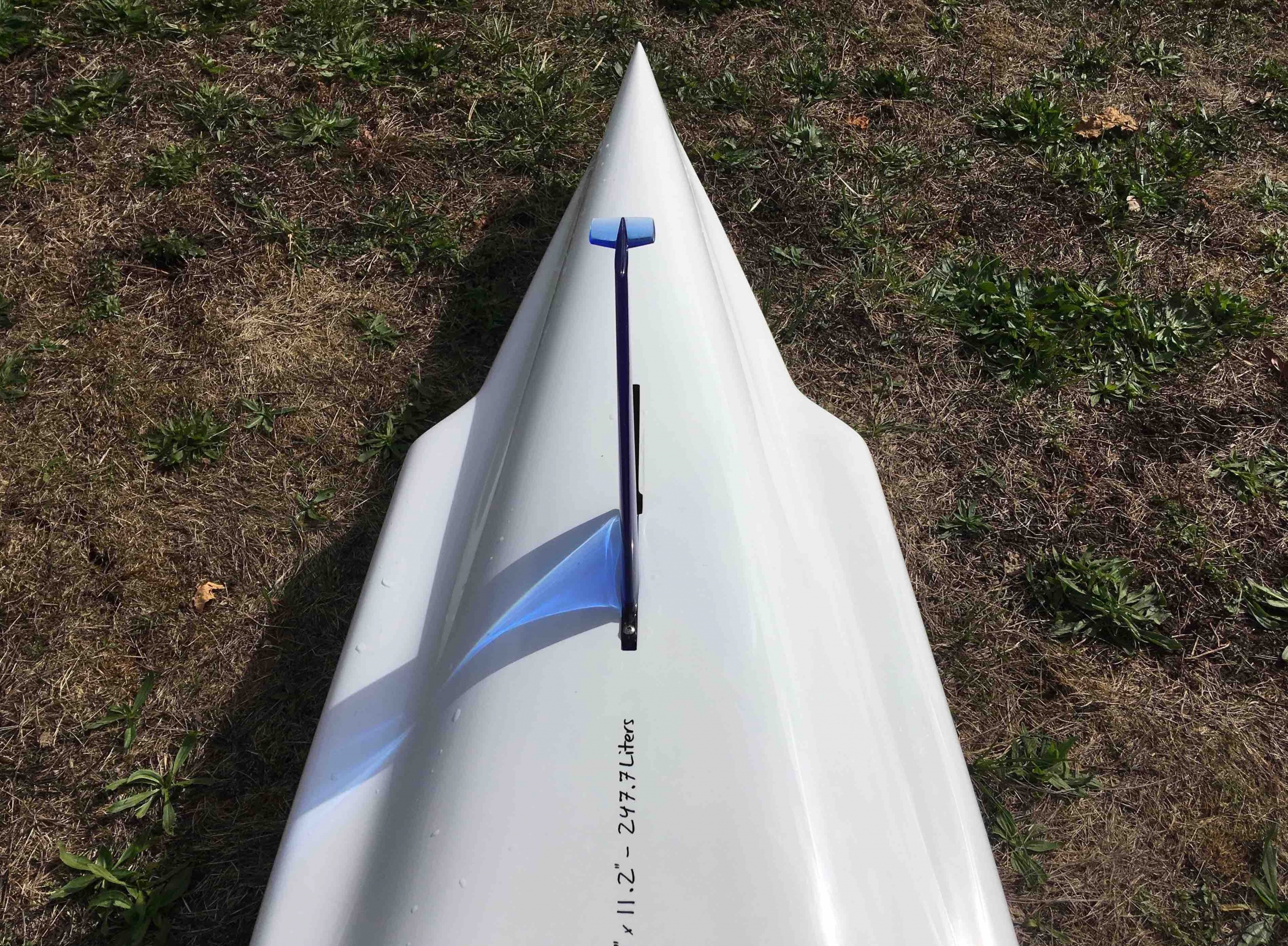
Even though quite different in depth and surface area, the two fins felt very similar with regard to stability; and both fins provide better stability than I would have thought given their low surface area. I assume this level of stability is also due to the high degree of lift generated since the FinSciences fin only has about 29 sq in of surface area. However, I have not had a chance to compare them in choppy ocean conditions yet, so we’ll see…
If you paddle in super weedy waters this fin probably is not for you as the finlets do tend to hold onto weeds. However, the only time I have had a problem is when I intentionally paddled through a weed-bed to see what would happen. It immediately felt like I was dragging a drogue shoot behind me, and it didn’t improve after 100 meters of hard paddling! A quick 180 degree pivot turn shed most of the weeds, enough that I didn’t feel them anymore while paddling; but when I stopped to inspect the fin there were still a few longer strands of water grass hung up under the winglets.
Although the FinSciences SUP fin isn’t quite as efficient as the Black Project Tiger, at least in my paddling (higher cadence on a planing-style allwater board), I could see it as a good option for longer distances where the straighter course it provides might more than make up for the 1% loss in efficiency over the Tiger found in this test. Where I see it being a really great option is for touring or for more adventure-type ultra SUP events (Yukon, Jersey Round Island, Great Glen, California River Quest, Seventy48, etc.) where the better low- speed performance will be more noticeable, and where an ultra lightweight, foam core fin, or even a thin solid carbon fin, could snap and leave you in a bad situation miles from anywhere.
Note: Doug at FinSciences sent me their semi-rigid fin to compare. It does not produce the vibration that their rigid, matte black fin does, but due to weather conditions (and more recently heavy smoke from the wildfires across Oregon) I have not been able to get on my test lake in flat calm to do more testing.
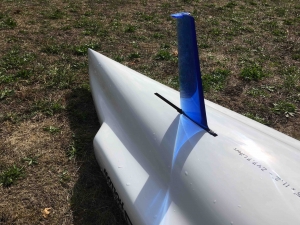
















Coming from a sailing catamaran background, I have had a long time appreciation of the end plate effect myself and have been experimenting with fins to try and make up for the silly single paddle used on SUP’s ( a double kayak paddle would be way more efficient and assist straight line paddling) and it’s weaving effect. When I got my latest SIC RS, which has the fin box so far forward, it looks like it was designed for surfing rather racing, I thought I would kill two birds with one stone and make a rear offset fin with a… Read more »
This is really great stuff gregjet so interesting to see and hear about what you’ve made and would love to see more pictures please send them over to us at reuben@supboardermag.com
Great to see creativity and ingenuity at work! Great looking fin! You brought up some really great points as well, namely how important it is to find the right board and fin combination for your personal paddling technique and speed. Some board designs require less fin, and others require much more fin; this can be due to rocker, the outline of the board, the shape of the rails, etc. Some paddlers have excellent technique and can use a very small fin, while others need a bigger fin to help keep them going straight. The faster you’re traveling through the water,… Read more »
Please note that I was not just commenting on the original tracking as being just a little wobble, but directionally wobbley even compared to my other boards, including my allrounder surfboard shaped boards. The SIC is a wierd hybrid of pure plaining and surface piercing, compared to most boards, as the pure plaining area extends almost to the front of the board , then fattens and curves into a cutting bow. So unless you submerge the bow point it is entirely a planeing entry.That means that the board itself ( sans fin) has little lateral resistance towards the front. I… Read more »
Nice to see folks still playing around with fin concepts. I’m seeing the Edge Pro 2.0 in the picture and can not help feeling it would have been the perfect test tool for this specific test. I own and love the Maliko but the Edge would maintain 5mph with far less effort and lower cadence which can only help making the test more dependent on physics than physique 🙂 The other thing I feel missing is the deceleration test, where you hit a certain top speed and see how far the board glides without input before it stops. Thanks for… Read more »
Great comments! Thanks @burchas! Just revisited my article and saw your post from last year. I totally agree that the Edge Pro 2.0 would have been a great test platform; however, I didn’t receive shipment of the ONE board until much later in the year (due to covid I didn’t even know if the board was going to be shipped when I was doing the testing). The guys at SUPBoarder just wanted more pics to include in the article, so I sent them what I had and could get at the time (which included a bunch of shots of my… Read more »